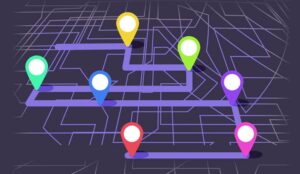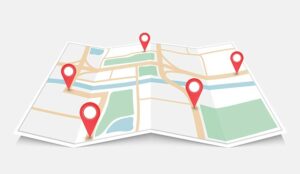Deeply understanding your customers is key to success.
Organizations looking to gain a competitive edge against other brands have quickly taken note of the importance of customer sentiment.
From simple surveys to full-scale conversation analytics and business performance improvement strategies, many companies are capitalizing on increasingly understanding the people they serve.
Customer journey mapping software fully supports such efforts by uncovering where users spend the bulk of their time interacting with a brand and what they’re interacting about.
By leveraging customer journey maps as a guiding process, your company can keep up with its customers’ evolving needs and expectations. Customer journey mapping tools improve customer experience (CX) by uncovering what’s working and what’s not, and making improvements as necessary.
How Customer Journey Mapping Works
At its core, a customer journey map is simply a visual representation of a customer’s experience with your company.
Customers start their journey with your company in the discovery stage and gradually come to interact directly across various touchpoints before concluding their journeys by making a purchase, using your services or seeking out a competitor.
All of the above is mapped out with clear descriptions of each interaction, customer concerns and more to gain valuable insight into the customer’s perception of your business.
Defining Your Customer
The first step in mapping out a customer journey involves describing the customer themselves.
A great way to handle this is by crafting a buyer persona. A template for a buyer persona should cover all key aspects of your ideal customer, including the following:
- Their profession
- Their concerns
- Their preferred information sources
- Their preferred purchasing process
- Demographics
With an ideal customer in mind, the next step in mapping their journey is charting the various touchpoints at which your ideal customer interacts with your business.
Charting Touchpoints
Each individual interaction between your customer and your brand should be accounted for to keep the resultant journey map as accurate as possible.
By tracking interactions as separate locations on a customer journey map, you can better appreciate the process from your customer’s perspective.
Keep in mind that a customer journey touchpoint might not necessarily fit neatly into the standard sales funnel – customers interact with your brand when they purchase something from you, they need help resolving an issue, etc.
Highlighting Experiences
At each identifiable touchpoint in the customer journey, experiences should be documented and carefully assessed.
Data plays a lead role in revealing common customer experience bottlenecks. Leveraging comprehensive analytics systems, like conversation analytics, can help you gain deeper insights from this step in the consumer journey mapping process.
More specifically, action-triggered user surveys, cart abandonment statistics, customer service ratings and additional KPIs can help paint a detailed picture of your customer’s experience interacting with your company.
Improving CX Through Customer Journey Mapping
Customer journey mapping is a great way to sleuth out shortcomings in your business’s daily operations.
By mapping out the customer journey and studying it carefully, you can identify issues before they negatively impact the customer experience. Following are a few ways in which an accurate journey map can be used for such a purpose:
Optimize Cohesion Across Touchpoints
Whether your customers are interacting with your website, making a purchase in person or contacting customer service, their experience should be positive. Each experience should also be familiar to them as authentic to your brand.
Mapping the customer journey helps to point out potential discrepancies between what your brand intends to accomplish in a given interaction and what your customers are actually experiencing.
Reduce Customer Effort
High-effort interactions turn customers away from your brand. A customer journey that contains too many steps before the customer can accomplish their own goals can be considered high-effort.
To better understand if and at what points this may be happening to your company and its customers, a thorough journey map is key.
By assessing your completed customer journey map, you can quickly determine where buyers are running into trouble and what parts of their journey could be eliminated or transformed to better serve them.
How does your business leverage customer journey mapping to improve customer experience?
Author: Guest Author
Published On: 4th Aug 2021 - Last modified: 20th Jan 2023
Read more about - Archived Content, CallMiner









































